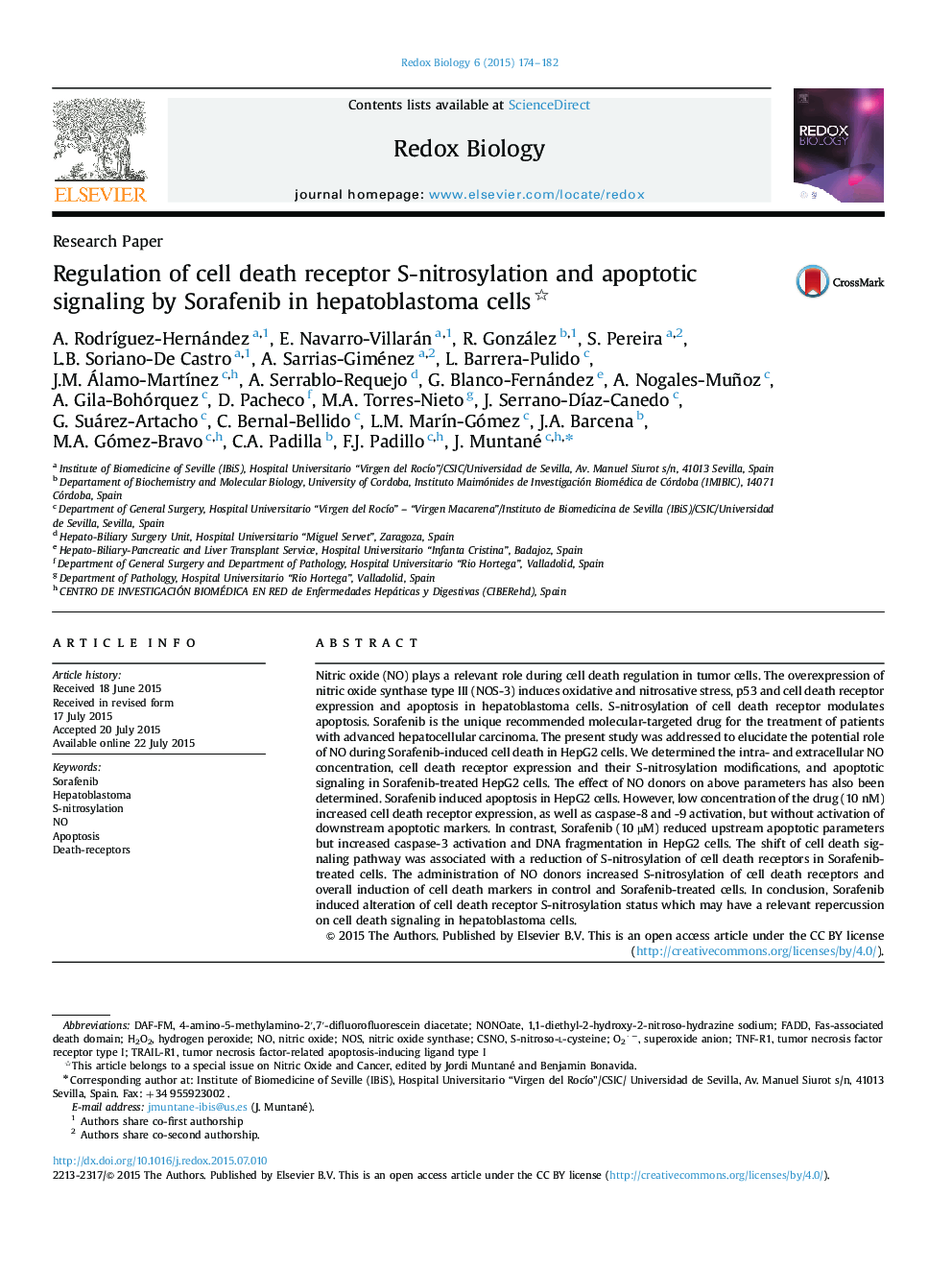| کد مقاله | کد نشریه | سال انتشار | مقاله انگلیسی | نسخه تمام متن |
|---|---|---|---|---|
| 1922924 | 1535844 | 2015 | 9 صفحه PDF | دانلود رایگان |

• Sorafenib induces apoptosis in hepatoblastoma cells.
• Low concentration of Sorafenib (10 nM) increases the expression of cell death receptor, as well as caspase-8 and -9 activation.
• High concentration of Sorafenib (10 µM) reduced cell death receptor S-nitrosylation that promoted a shift to more potent activation of downstream apoptotic markers.
Nitric oxide (NO) plays a relevant role during cell death regulation in tumor cells. The overexpression of nitric oxide synthase type III (NOS-3) induces oxidative and nitrosative stress, p53 and cell death receptor expression and apoptosis in hepatoblastoma cells. S-nitrosylation of cell death receptor modulates apoptosis. Sorafenib is the unique recommended molecular-targeted drug for the treatment of patients with advanced hepatocellular carcinoma. The present study was addressed to elucidate the potential role of NO during Sorafenib-induced cell death in HepG2 cells. We determined the intra- and extracellular NO concentration, cell death receptor expression and their S-nitrosylation modifications, and apoptotic signaling in Sorafenib-treated HepG2 cells. The effect of NO donors on above parameters has also been determined. Sorafenib induced apoptosis in HepG2 cells. However, low concentration of the drug (10 nM) increased cell death receptor expression, as well as caspase-8 and -9 activation, but without activation of downstream apoptotic markers. In contrast, Sorafenib (10 µM) reduced upstream apoptotic parameters but increased caspase-3 activation and DNA fragmentation in HepG2 cells. The shift of cell death signaling pathway was associated with a reduction of S-nitrosylation of cell death receptors in Sorafenib-treated cells. The administration of NO donors increased S-nitrosylation of cell death receptors and overall induction of cell death markers in control and Sorafenib-treated cells. In conclusion, Sorafenib induced alteration of cell death receptor S-nitrosylation status which may have a relevant repercussion on cell death signaling in hepatoblastoma cells.
Figure optionsDownload as PowerPoint slide
Journal: Redox Biology - Volume 6, December 2015, Pages 174–182